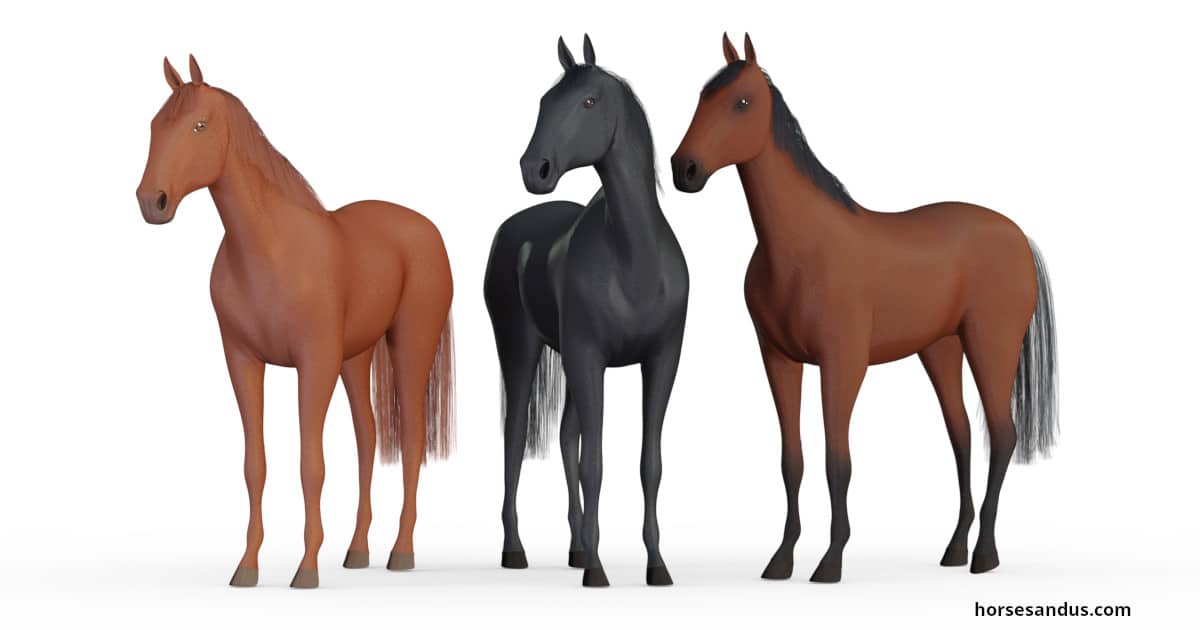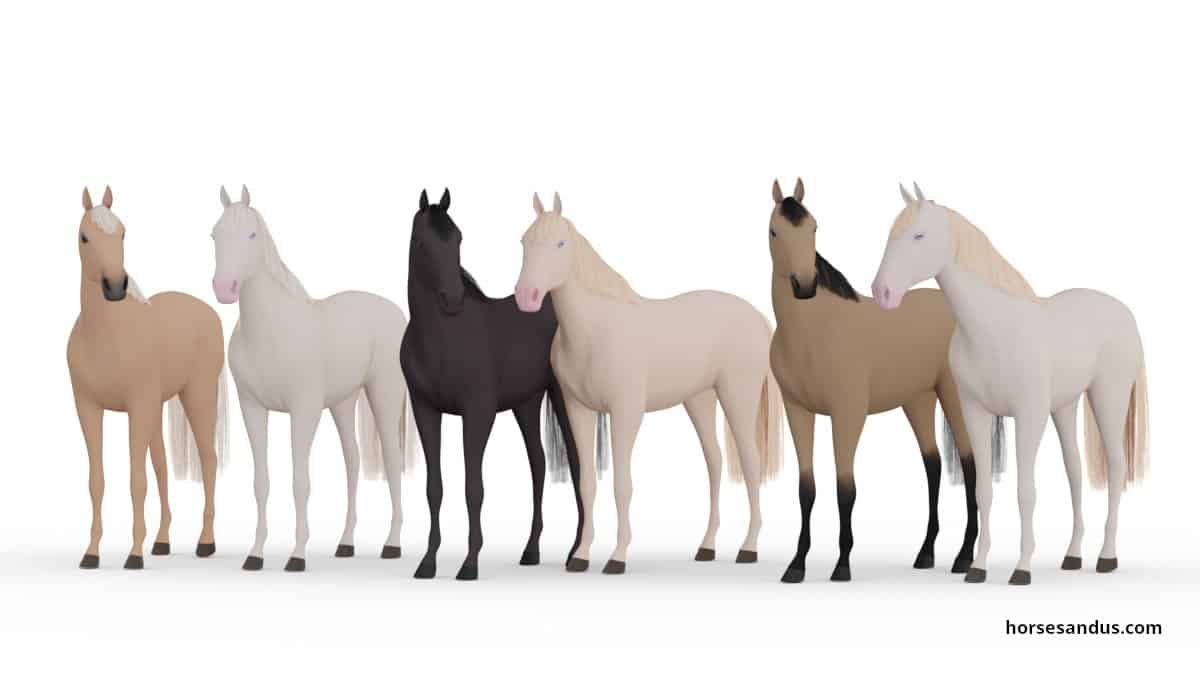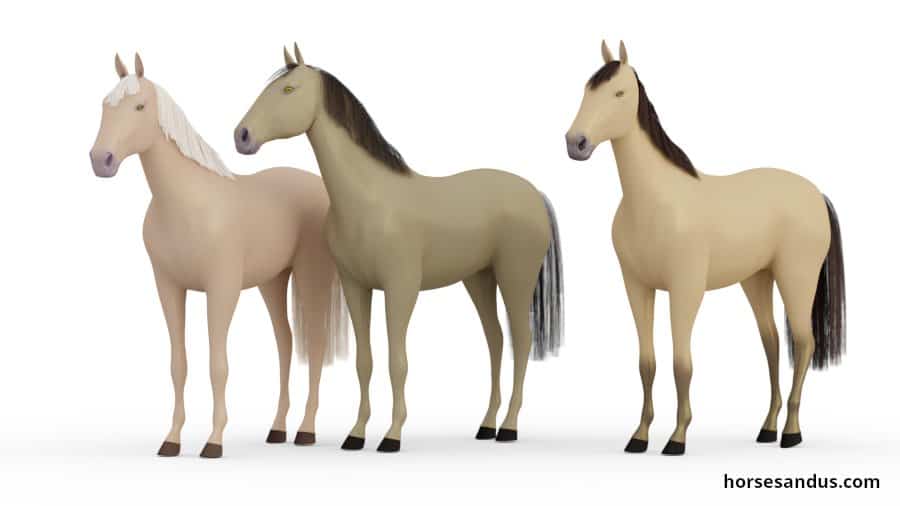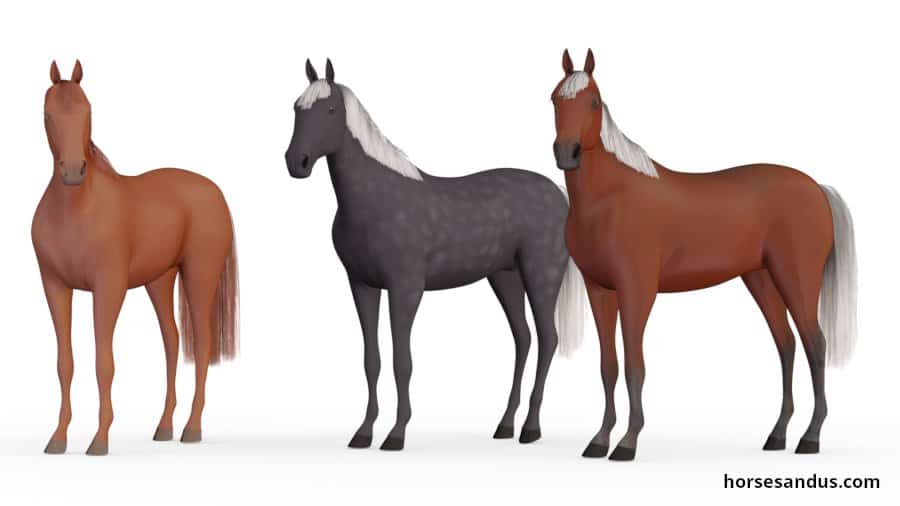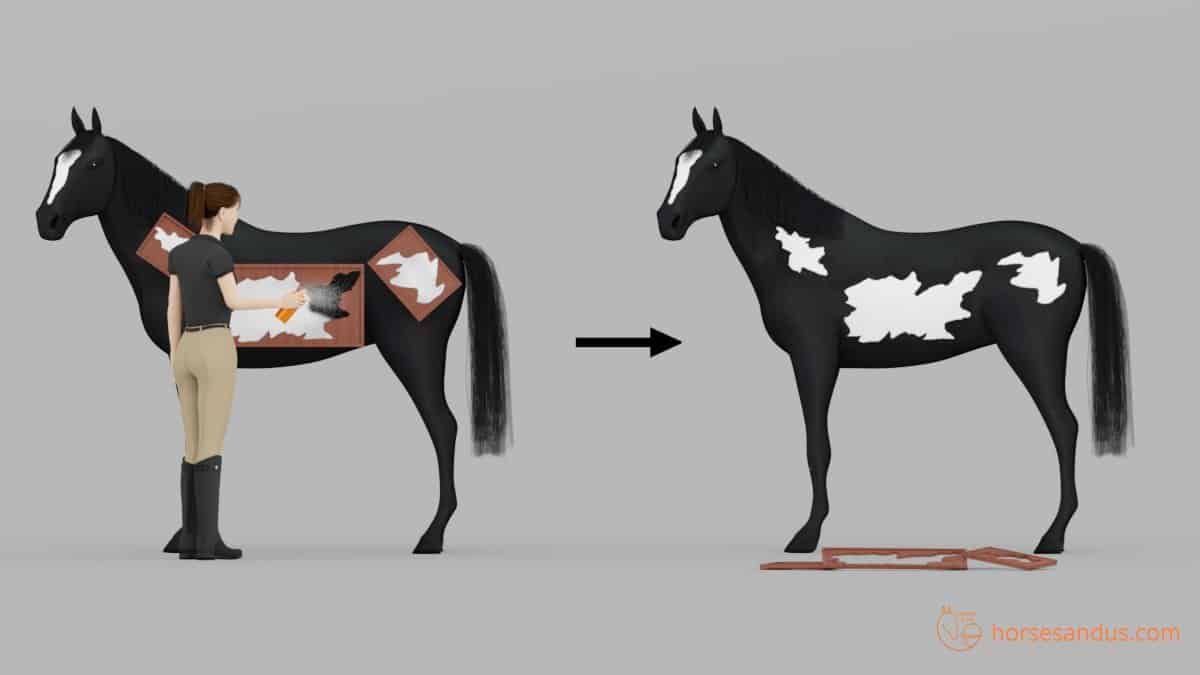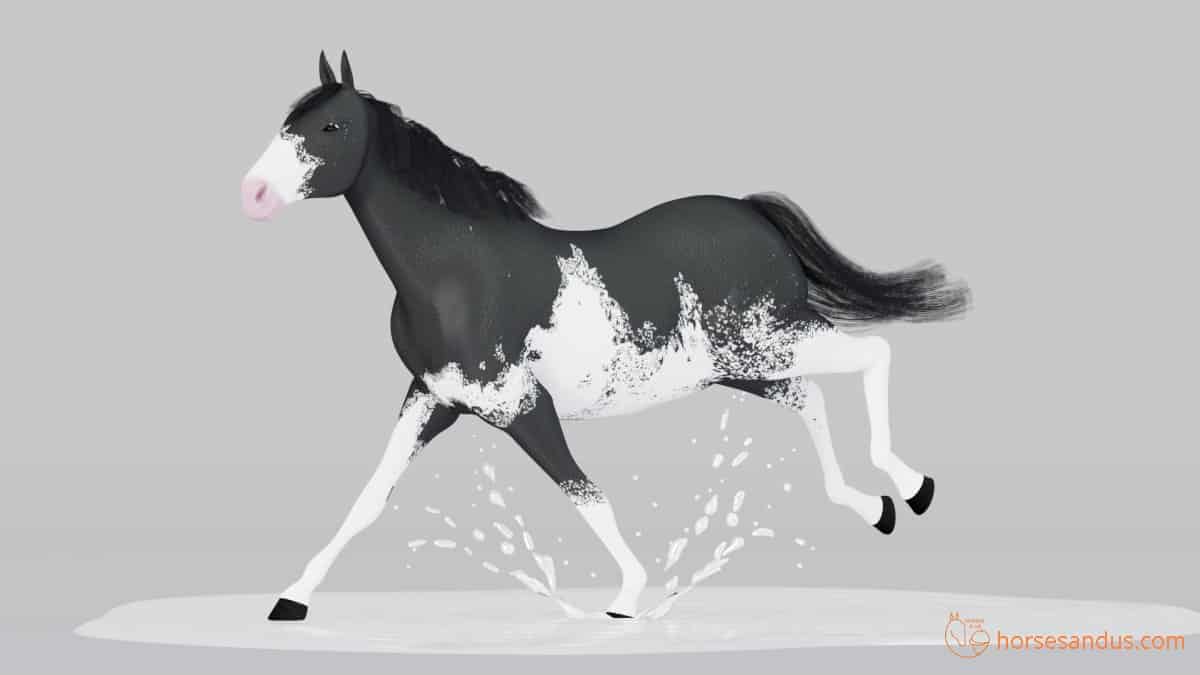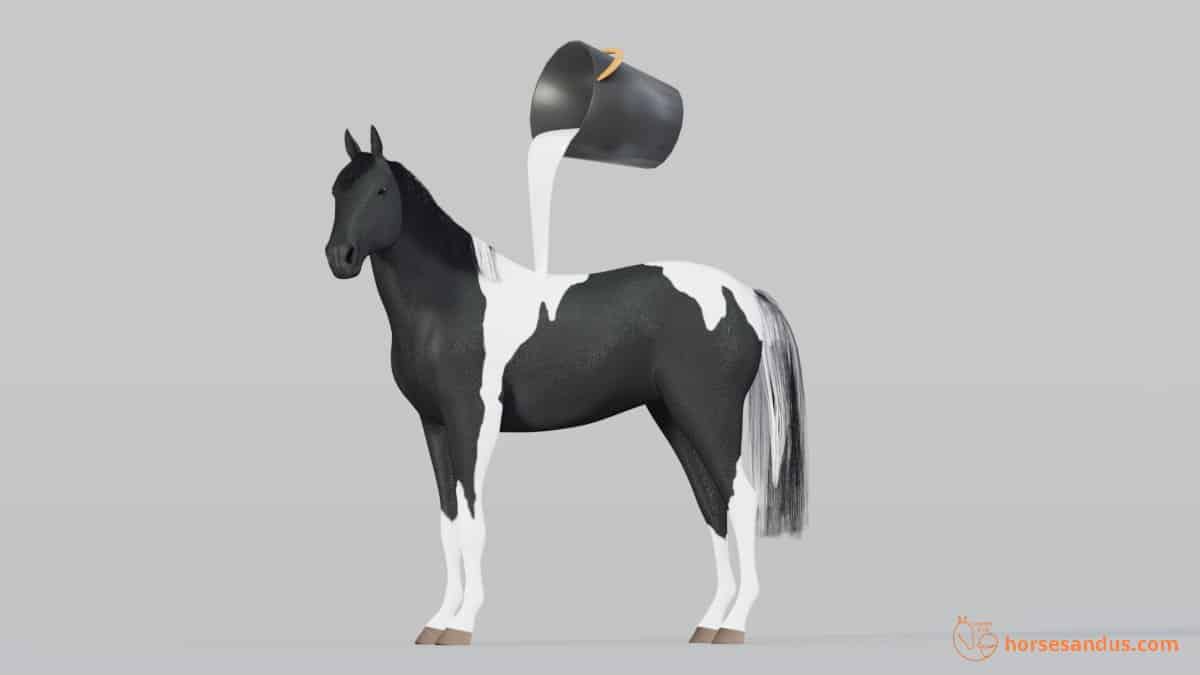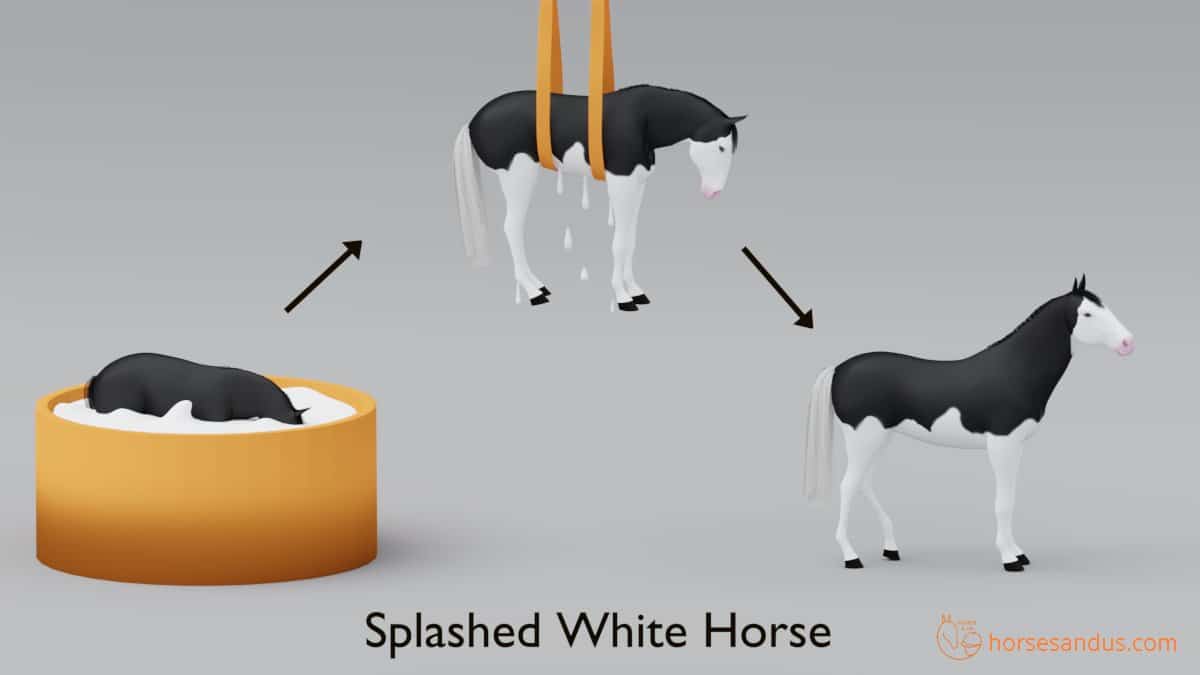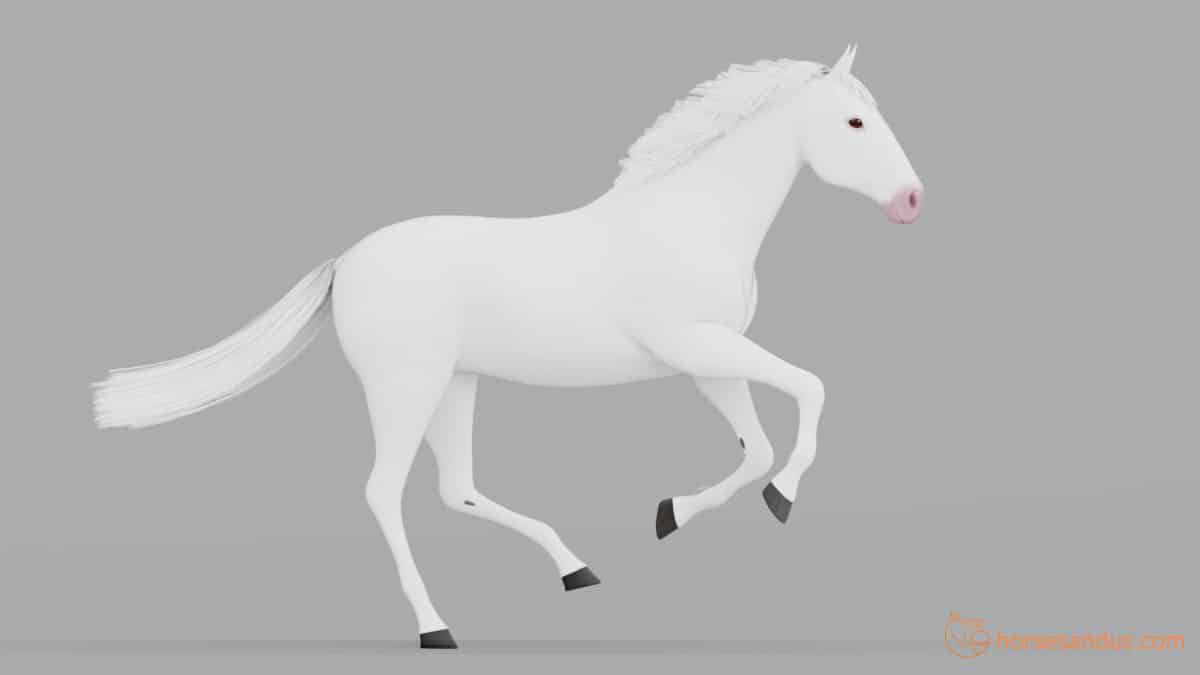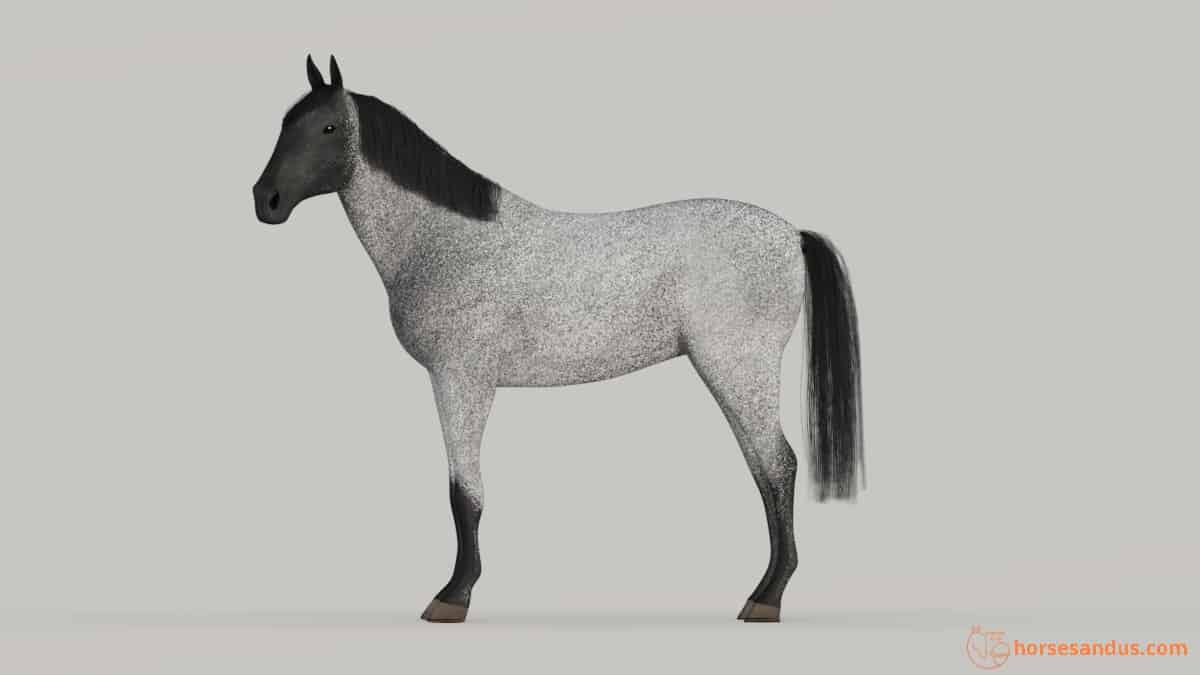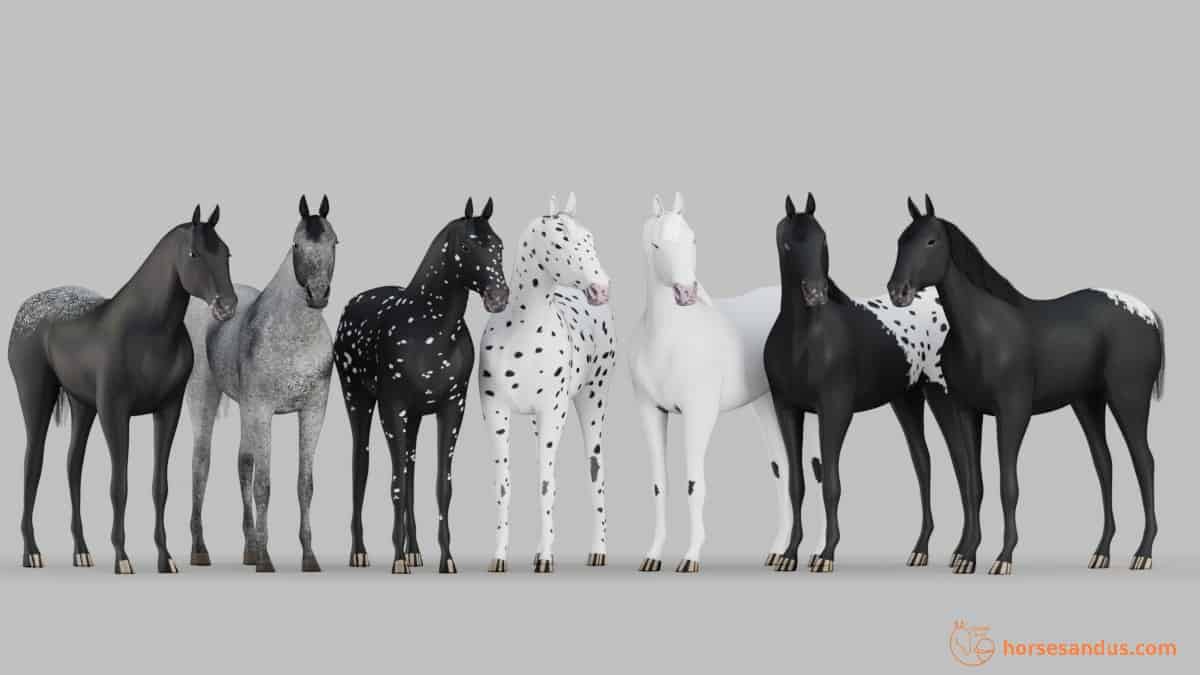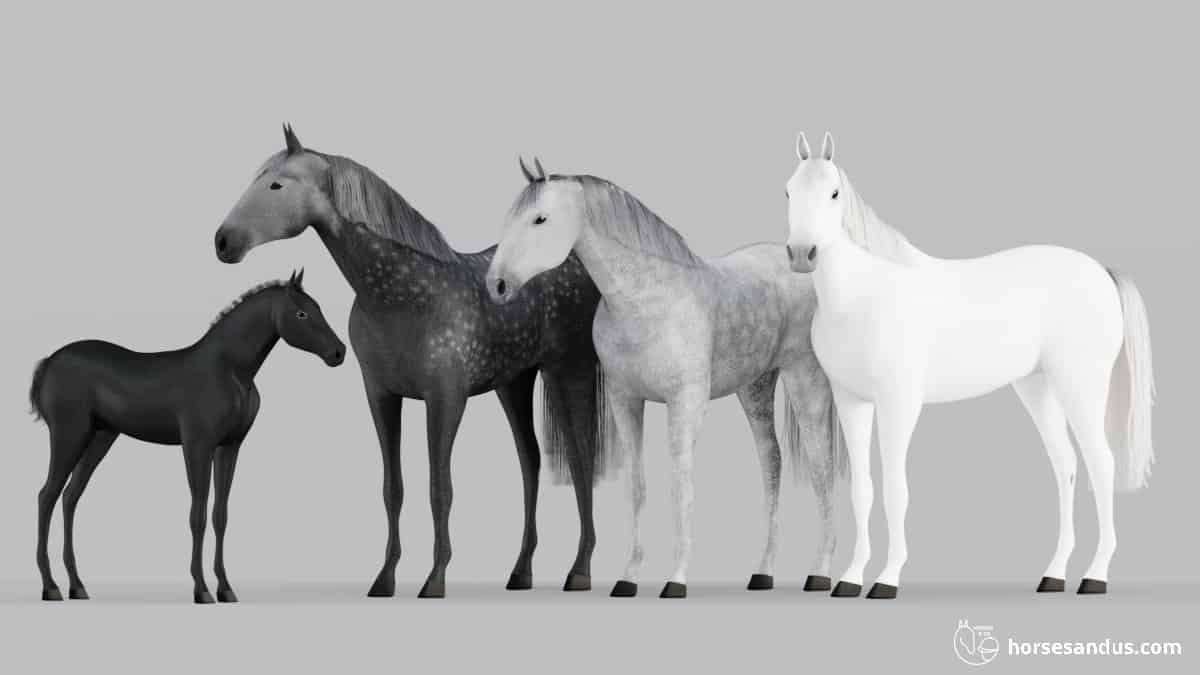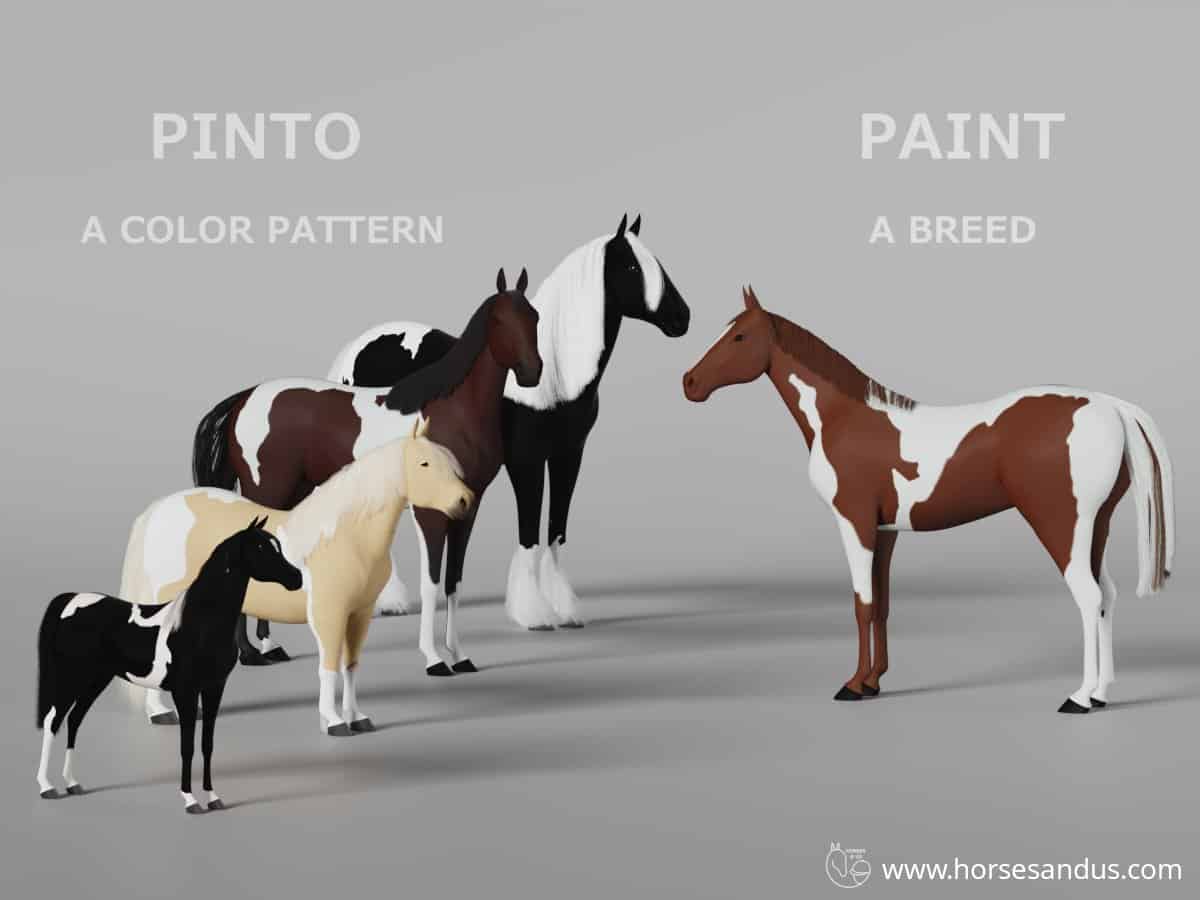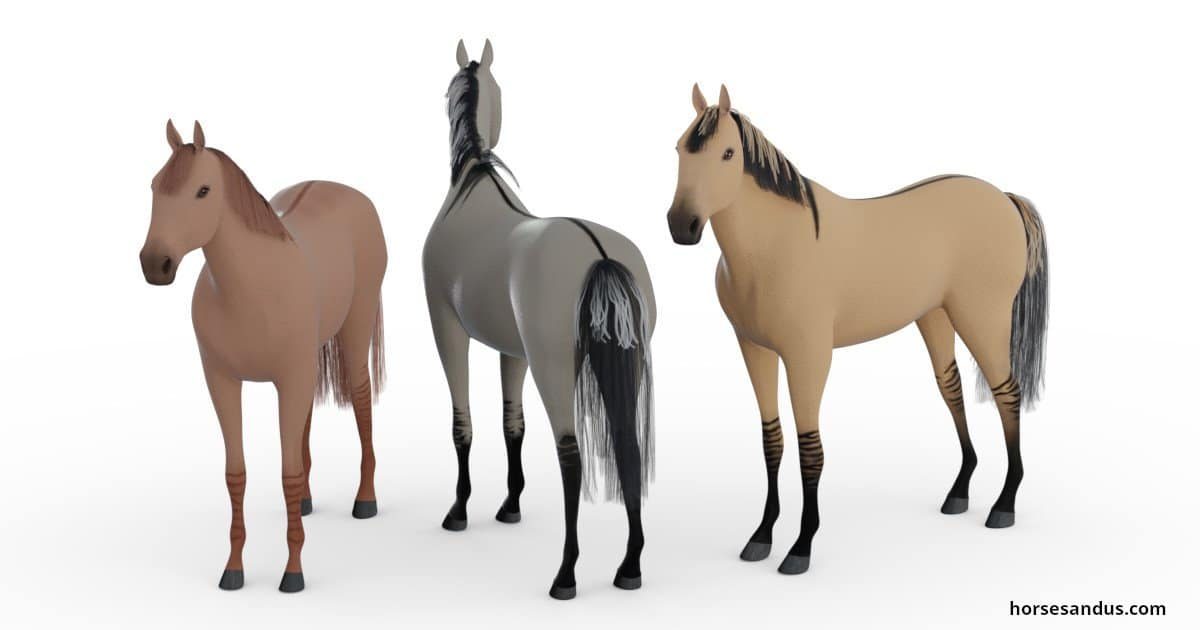Horses come in a wide variety of coat colors, ranging from saturated dark shades to soft dilutions, with either matt or glossy coats. Their bodies are adorned with unique patterns and markings, making each horse a special work of art. Prepare to be captivated by the stunning variety of colors, textures, and patterns displayed by these lovable equines!
This article covers all the known colors and patterns, how colors are produced, how colors developed through time, and some issues related to a few color and pattern genes.
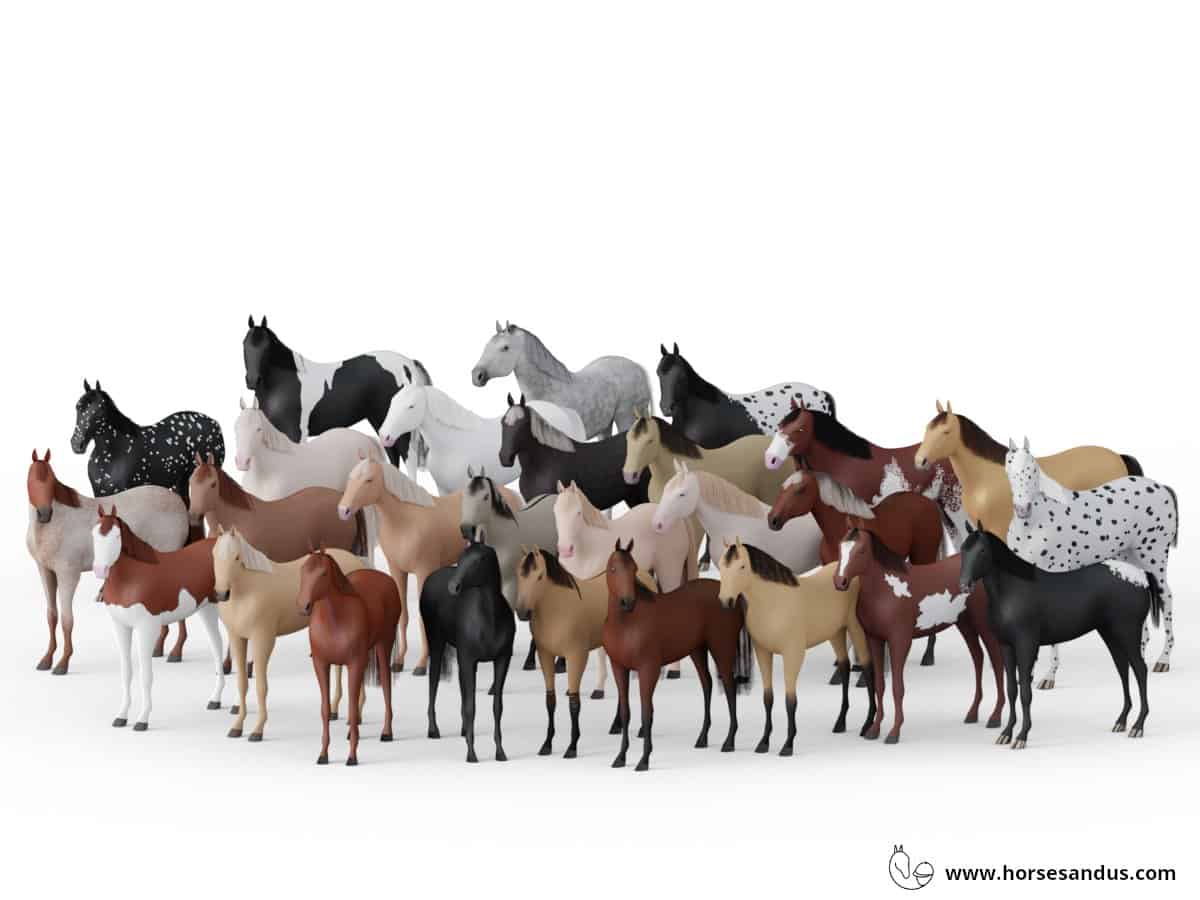
How are Coat Colors Produced?
DIstinctive coloration is very much valued in horses, and buyers will easily pay a higher price for an attractive colored coat.
Usually, the colors with greater visual appeal and higher market value originate from specific combinations of genes.
Colores are Formed by Successive Layers of Genes
Coat colors are formed by combining certain genes that produce a particular coat color and pattern.
To better understand how this works, we should consider each gene as a layer, one on top of another, and observe each new layer’s effect on the resulting coat color.
Let’s take a look at an example so you can understand this more easily.
In the below illustration, we will see an example of how each layer of genes affects the horse´s coat. The final outcome is a palomino pinto.

Although there are only a handful of color genes, they can be expressed in many different combinations and therefore originate a wide variety of colors and patterns.
We have created a series of articles to help you visually identify the horse’s color and understand how the different color genes produce it.
Understanding Color Genetics
Understanding color genetics is important for breeders who are seeking to produce particular colors. With this knowledge, they can decide which horses they can to mate in order to:
- Produce foals with the desired coat colors.
- Avoid colors that are not acceptable for registration in certain breeds. For example the Cleveland Bay must be bay, Friesians must be black, Suffolk Punches must be chestnut in order to be registered.
- Avoid Potential health issues associated to some color gene mutations, like for example lethal white.
You may find it useful to read the basics of horse color genetics to understand this article better.
All The Different Colors and Patterns in horses
There are only a handful of color and pattern genes. But they can be combined in many different ways leading to the enormous diversity of coat colors that horses have today.
Let’s take a look at all the different color and pattern genes that are currently known.
Base Colors
No matter how exotic they appear, all horse coat colors emerge from the 3 base colors, red(chestnut), black, and bay.
Our article, 3 base horse coat colors, provides all the information you need about the base colors.
Diluted Colors
When a horse does not manifest any of the base colors (black, chestnut, or bay), it means that a dilution gene has acted to dilute the horse’s base color.
Diluted colors are obtained by adding another layer of genes which are called dilution genes.
These genes reduce the amount of pigment. The resulting effect is a dilution of the original hair color. Some dilutions also alter the color of the skin and eyes.
We can compare this to the effect that water has on concentrated orange juice. In its original state, it has an intense orange color, but when we add water (which would be equivalent to the dilution genes) the orange color becomes more diluted and so lighter and less intense.
There are several genes that dilute the base color of a horse, including Dun, Cream, Champagne, and Silver.
For more information about each color click on the images below.
White Patterns
Additionally, white patterns can be added with more layers of genes.
The pattern genes modify the color of the horse by deleting color in certain areas (patches). The areas affected will vary depending on the different pattern genes.
There are many genes that produce different white patterns such as:
- The Pinto patterns which inlude
- Other white patterns like
For more information about each white pattern, click on the images below.
Grey Color
Finally, any color can be modified as the horse grows older if the grey gene is present.
The action of this gene consists of a gradual whitening of all hairs on the horse’s body. But the skin may remain dark. However, in some cases, the skin becomes gradually unpigmented as well.
Our article about the different shades and patterns of the grey horse will give you detailed information about this color modifier.
Variations in Colors and Patterns
Variations within a given color or pattern can be huge, making it very difficult and sometimes even impossible to identify the underlying genes.
Color Variations
Every color varies within a certain range, from a lighter shade to a darker one. The horses with color shades on the boundaries (very light shades and very dark shades) can look very different and even be confused with other colors from different genes.
Certain coat colors are visually similar but can be produced by different genes, for example:
- buckskin vs bay dun
- palomino vs flaxen chestnut
- grey vs roan
- cremello vs perlino vs smokey black
To add even more confusion, coat colors can vary from season to season. Horses are usually darker after they shed their thick winter coats. In some cases, the sun and sweat can bleach the color of the coat.
Good nutrition and health will also result in a darker and shinier coat.
Colors can also vary with age, as is the case when the grey gene is present.
Pattern Variations
The same white pattern can vary hugely from minimal to maximal expression. The extreme expressions can be either solid white or solid color.
- The maximal expressions are often confused with one another and also with dominant white.
- The minimal expressions mimic a solid color coat.
Additionally, a coat may have a combination of different white patterns. Making it sometimes impossible to identify the pattern genes behind it.
What to do When it is Visually Impossible to Identify Colors and Patterns
All of these variations can create a lot of confusion when trying to identify the color and pattern.
Sometimes it is only possible to identify the correct color and pattern by checking the pedigree or through DNA testing.
How Horse Colors Evolved Through Time
Horses have been highly valued for their coat color since prehistoric times.
Since man started domesticating the horse, around 5000 years ago, the variety of coat colors increased tremendously.
Most of the colors that exist today were not present in primitive horses.
The Colors of Primitive Horses
The only three colors that existed before domestication were bay, spotted and black. This is demonstrated by the prehistoric paintings and also confirmed by DNA analysis of horse fossils. (source).

- During the Pleistocene (more than 12,00 years ago) also known as Ice age, the bay dun color and Leopard spotted pattern provided an effective camouflage against predators in the savanas and snowy landscapes.
- When the Holocene started (12,000 years ago until today) the abrupt warming melted the ice and allowed the expansion of forested areas. This is when the black horses appeared, maybe due to a natural selection for darker camouflage in the shaded forests.
Researchers believe that these 3 colors were enough to provide the diversity of colors and patterns seen in horses today.
Changes in Color Preferences After Domestication
After the domestication of the horse, the human preferences for colors changed over time.
Copper age (5000 BC to 3300 BC.)
- Tobiano, Sabino, and chestnut appear to arise shortly after domestication.
Bronze age (3300 BC to 1200 BC)
- Tobiano and Sabino Spotted horses are almost absent. Prevalence of solid colors
Iron age (1200 BC to 600BC))
- Spotted (Tobiano, Sabino, Leopard Complex) and diluted horses were considerably more frequent
Middle Ages (5th to 15th century)
- Solid colors were prefered, especially chestnut. Spotted and diluted horses were considerably reduced.
The Undesirable Effects of the Desirable Colors
Horse breeders are very interested in the coat color and patterns because they can substantially increase a horse´s marketability. The buyer will often be willing to pay more for a horse with an attractive color pattern.
But the temptation to breed for color may compromise two important aspects of the horse:
1- The quality of the horse´s conformation and performance can be compromised if care is not taken to select for these traits at the same time as selecting for colors.
2- Additionally, some colors and patterns are associated with health problems. If care is not taken to avoid certain matings these health issues can be passed on to the offspring.
These health problems include:
- Lethal White Syndrome in homozygous Overo horses
- Congenital Ocular Defects in Silver horses
- Night blindness in homozygous Leopard Complex/Appaloosa horses
Conclusion and what next
A wide variety of colors appeared after the domestication of the horse, with the more striking and unusual colors being preferred.
During the last decade, the genetics of coat coloring has been vastly studied and there is now an ever-growing amount of information about horse color genetics, that is easily accessible.
Although there is still much to learn in this area, the benefits of increasing our knowledge are clear:
- increasing the chances of breeding foals with the desired colors
- preventing health problems in the horses we breed.
There are many genetics tests, designed specifically for breeders who are interested in breeding horses of certain colors.
Further Reading
If you would like to learn more about horse colors and white patterns, you may want to read the following books, available on amazon.
The links below that lead to products on Amazon are affiliate links and I earn a commission (with no additional cost for you) if you make a purchase.
The following books are an introduction to horse colors and white patterns which are full of images and very easy to understand.
The Equine Tapestry: An Introduction to Colors and Patterns The Ultimate Guide to Horse ColorsA more technical book about horse colors, but still very easy to understand.
Equine Color GeneticsSources
- https://pubmed.ncbi.nlm.nih.gov/19390039/
- https://www.igbzpan.pl/uploaded/FSiBundleContentBlockBundleEntityTranslatableBlockTranslatableFilesElement/filePath/359/pp159-164.pdf
- https://www.ncbi.nlm.nih.gov/pubmed/29785944
- http://www.seaspiritoftheforest.co.uk/equine/colourhistory.html
- https://www.ncbi.nlm.nih.gov/pmc/articles/PMC5141471/
- https://www.sciencedaily.com/releases/2016/12/161207091114.htm
